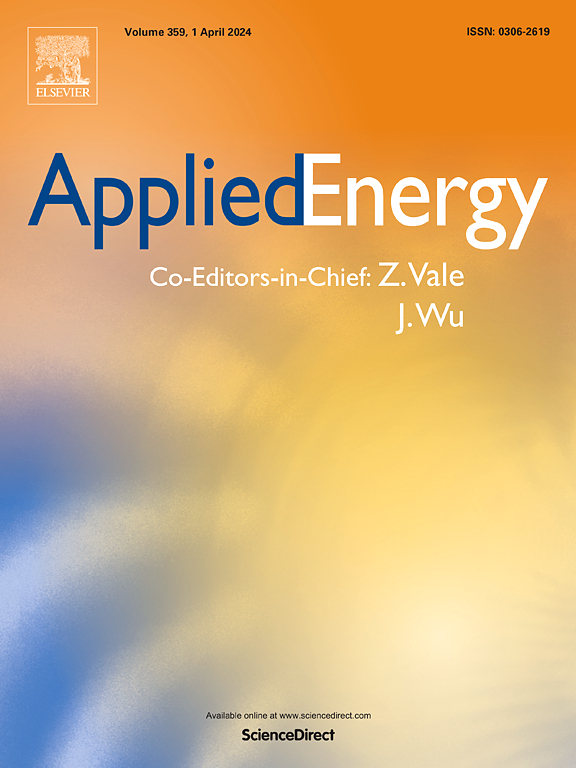Achieving 100 % renewable e-methanol incorporating biomass-fired generation: A techno-economic study
IF 10.1
1区 工程技术
Q1 ENERGY & FUELS
引用次数: 0
Abstract
Converting renewable hydrogen () and carbon dioxide () into methanol is a promising pathway for decarbonizing the chemical industry. The produced renewable methanol can also be used for decarbonizing other sectors, such as shipping and power systems. Achieving 100 % renewable methanol requires both and sources to be “renewable”. Currently, from direct air capture (DAC) or biomass can be regarded as the renewable one. However, DAC’s high cost and the challenges in scaling up biomass gasification hinder their practical application in large-scale renewable methanol production. To address the issues above, this paper proposes a novel 100 % renewable e-methanol synthesis technical route (MSTR) incorporating the mature biomass-fired generation (denoted as MSTR-3). Two biomass gasification-based MSTRs (denoted as MSTR-1 and MSTR-2) are introduced as the benchmarks. A fractional programming (FP)-based optimization framework is established to evaluate the techno-economic levels of different MSTRs, with the levelized cost of methanol (LCOM) used as the objective function. The results indicate that the proposed MSTR-3 can trade off the cost and the resource utilization, avoiding the high curtailment of renewable energy sources (RES) and low utilization of carbon from biomass observed in MSTR-1 and MSTR-2. Furthermore, combining inflexible MSTR-2 with flexible MSTR-3 can reduce LCOM from 4310 RMB1/t (588 USD/t) to 3849 RMB/t (525 USD/t), demonstrating that coordinated planning of flexible and inflexible loads is an effective strategy for achieving both economic benefits and improved resource utilization.
求助全文
约1分钟内获得全文
求助全文
来源期刊

Applied Energy
工程技术-工程:化工
CiteScore
21.20
自引率
10.70%
发文量
1830
审稿时长
41 days
期刊介绍:
Applied Energy serves as a platform for sharing innovations, research, development, and demonstrations in energy conversion, conservation, and sustainable energy systems. The journal covers topics such as optimal energy resource use, environmental pollutant mitigation, and energy process analysis. It welcomes original papers, review articles, technical notes, and letters to the editor. Authors are encouraged to submit manuscripts that bridge the gap between research, development, and implementation. The journal addresses a wide spectrum of topics, including fossil and renewable energy technologies, energy economics, and environmental impacts. Applied Energy also explores modeling and forecasting, conservation strategies, and the social and economic implications of energy policies, including climate change mitigation. It is complemented by the open-access journal Advances in Applied Energy.
 求助内容:
求助内容: 应助结果提醒方式:
应助结果提醒方式:


